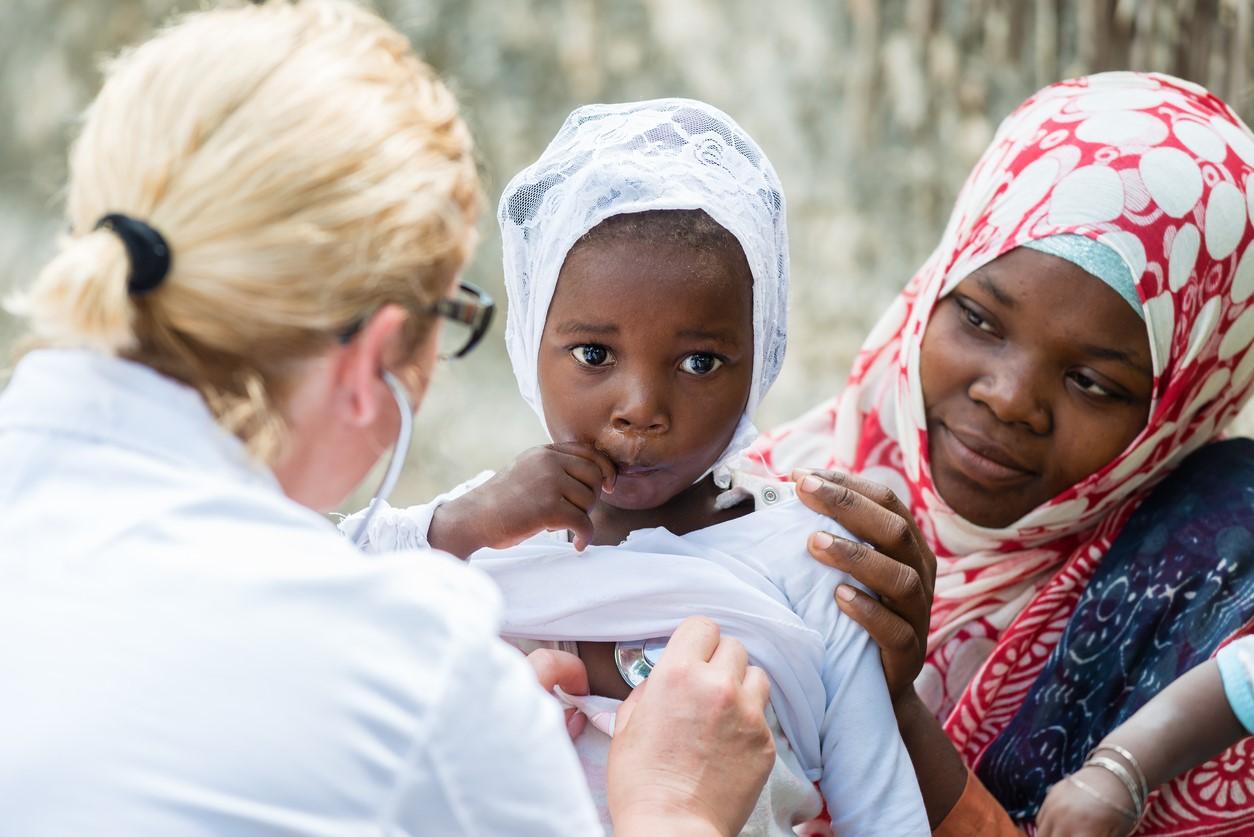A study conducted in three low- and middle-income countries (LMICs) found extensive inappropriate antibiotic prescribing in young children.
The study, published yesterday in PLOS Medicine, determined that more than three quarters of consultations resulting in an antibiotic prescription for children age 2 and under in Madagascar, Senegal, and Cambodia involved a diagnosis that didn't require an antibiotic. Factors associated with an increased risk of an inappropriate prescription included being older than 3 months of age and living in rural settings.
"These inappropriate antibiotics may contribute to the emergence of antibiotic resistance despite providing little to no benefit—or even harm—to the patients concerned," the study authors wrote.
Scarce data on magnitude of the problem
For the study, a team led by researchers from Université Paris-Saclay used data from a prospective, community-based mother-and-child cohort known as the BIRDY study, which followed children from birth to 24 months across rural and urban sites in Madagascar, Senegal, and Cambodia from 2012 to 2018. Data from the cohort have been used for multiple studies aimed at assessing the incidence of childhood infections caused by antibiotic-resistant bacteria in three representative LMICs.
The authors note that although young children in LMICs bear the greatest share of global infectious disease burden and are heavily exposed to antibiotics in the first few years of life, there are few studies describing the magnitude and determinants of inappropriate prescribing, particularly in outpatient settings.
"Such data are necessary to quantify potential for prescribing reductions, to describe which populations are potentially overexposed to antibiotics, and ultimately to inform interventions targeting prevention of inappropriate prescribing," they wrote.
For the present study, researchers examined data on children from the BIRDY cohort who had at least one outpatient consultation during the time they were followed. Using a classification algorithm developed according to World Health Organization guidelines, they defined inappropriate antibiotic prescriptions as those prescribed for a condition that does not require antibiotic therapy. They used mixed logistics analyses to investigate risk factors for inappropriate prescriptions.
Overall, there were 11,762 outpatient consultations in the three countries over the follow-up period, 3,448 of which (29.3%) resulted in an antibiotic prescription. Of those prescriptions, 2,639 (76.5%) were associated with diagnoses the researchers determined did not require an antibiotic. The proportion of consultations that involved a diagnosis that didn't require an antibiotic but still received one ranged from 15.5% in Madagascar to 57% in Cambodia and 57.2% in Senegal.
These inappropriate antibiotics may contribute to the emergence of antibiotic resistance despite providing little to no benefit—or even harm—to the patients concerned.
In Cambodia and Madagascar, the diagnoses that accounted for the greatest share of inappropriate prescriptions were the common cold (59% of associated consultations in Cambodia, 7.9% in Madagascar) and gastroenteritis (vomiting and diarrhea) without evidence of blood in the stool (61.6% and 24.6%, respectively). In Senegal, inappropriate prescribing was primarily driven by uncomplicated bronchiolitis, a lung infection (84.4% of associated consultations).
Analysis of risk factors found that children aged 3 months and older had a higher risk of an inappropriate prescription than children aged 3 months and younger in all three countries, ranging from an adjusted odds ratio (aOR) of 1.91 (95% confidence interval [CI], 1.63 to 2.25) in Senegal to 3.65 (95% CI, 2.96 to 4.28) in Madagascar to 5.25 (95% CI, 3.85 to 7.15) in Cambodia. Children living in rural areas had a higher rate of inappropriate prescription compared to those living in urban areas, with aORs of 1.83 (95% CI, 1.57 to 2.14) in Madagascar, 4.07 (95% CI, 3.12 to 5.31) in Cambodia, and 4.40 (95% CI, 2.34 to 8.28) in Senegal.
Consultations during the rainy season and children with a higher clinical severity score were also associated with higher risk of an inappropriate prescription.
Improving prescribing at the community level
The study authors say that while the findings are limited by the lack of bacteriologic documentation, the rigorous documentation of patient symptoms and diagnoses suggests the results represent a reliable estimate of local antibiotic prescribing practices. And the high rate of inappropriate prescribing they found indicates that interventions are needed in LMICs to improve prescribing at the community level.
Among the possible interventions they suggest are training prescribers using validated pediatric clinical guidelines and increasing access to rapid diagnostic tests that can distinguish between viral and bacterial infections, especially in remote areas. They also note that further research is needed in these settings to better understand prescribers' motivations and the perceived necessity of antibiotics among patients.
"The decision-making process underlying antibiotic prescription is complex, particularly in the absence of robust microbiological information and given challenging socioeconomic contexts, requiring the implementation of locally adapted multimodal strategies," they wrote.























